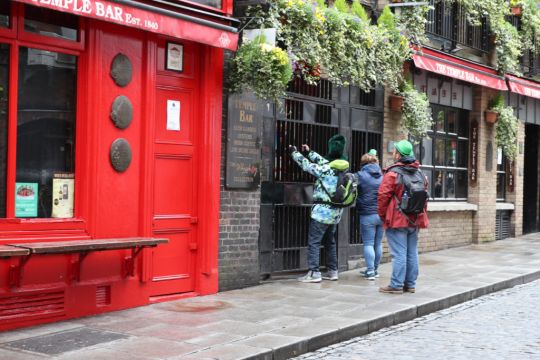The number of hours worked per week at the end of last year fell by 6.6 million, new figures show.
The report by the Central Statistics Office (CSO) reveals the stark effects of the Covid-19 pandemic on the Irish labour market.
According to the labour force survey (LFS), the drop in hours worked was due to absences from work, which was up by 70.5 per cent compared to the final quarter of 2019.
This resulted in a fall of 8.5 per cent in the number of hours worked per week over the year to 70.8 million.
The CSO said absences from work, including temporary lay-offs, family leave and holidays, have had a significant effect on the number of hours worked in the economy.
Fall of 6.6 million hours worked per week in Q4 2020 due to absences from work highlights the continued adverse effects of COVID-19 on the Labour Markethttps://t.co/9V4QfAD3AH #CSOIreland #Ireland #LabourForceSurvey #LabourForce #Households #Families #Employment pic.twitter.com/myboGk7AWD
— Central Statistics Office Ireland (@CSOIreland) February 25, 2021
The number of hours worked in several sectors, such as public administration and defence, information and communications, were near 2019 levels. Absences were highest in sectors like accommodation and food services.
Meanwhile, the survey shows that by the end of December last year the Covid-19 adjusted unemployment rate was just under 20 per cent.
By the end of January, it jumped to 25 per cent following the introduction of Level 5 restrictions.
The CSO released two different unemployment figures for the final quarter, stating it has provided details of Covid-19 income support payments separately.
The figures shows there were 138,900 persons classified as unemployed in the final quarter, with an unemployment rate of 5.7 per cent for those aged 15 to 74.
Sectors which suffered the most included administration and support services which dropped by almost 27 per cent, accommodation and food services fell by 25.7 per cent while arts, sports, entertainment and cultural activities dropped by 15 per cent.
Statistician Jim Dalton said: “The Covid-19 pandemic is continuing to have a considerable impact on the Irish labour market and that impact started towards the end of quarter one 2020.
“As the CSO is obliged to follow standard definitions and methodology when calculating the official estimates from the labour force survey (LFS), it has been decided to compile the quarter four 2020 LFS estimates in the usual way and provide separate Covid-19 adjusted estimates.
“This approach preserves the methodology of the LFS while at the same time providing transparency around the current impact of Covid-19 on the labour market within Ireland.”
The figures also show the official level of employment fell by 2.5 per cent year-on-year to 2.3 million people.
Today’s jobs numbers lay bare the devastating impact the pandemic has had on the economy & employment. Over 400k jobs have been lost & a quarter of our labour force is now unemployed.
— Leo Varadkar (@LeoVaradkar) February 25, 2021
The Covid-adjusted measure of total employment is estimated at 1.97 million at the end of last year, down 17 per cent year-on-year, and 1.82 million in January 2021.
While 2.3 million people were officially employed in the fourth quarter according to the LFS, when adjusted for PUP (pandemic unemployment payment) recipients, the figure would have stood at 1.97 million at the end of December and 1.83 million in January 2021.
Tánaiste and Minister for Enterprise Leo Varadkar said the numbers “lay bare the devastating impact” the pandemic has had on the economy and employment.
“More than 400k jobs have been lost and a quarter of the labour force is now unemployed,” he added.
“It also shows the disparity and unfairness of the virus with job losses heavily and disproportionately affecting the private sector and sectors like retail, hospitality, tourism and entertainment especially.”







